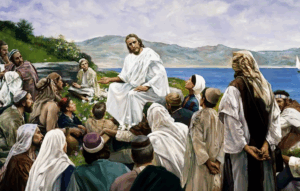
Editors’ note: To contextualise these translations of Karlheinz Deschner’s encyclopaedic history of the Church in 10-volumes, Kriminalgeschichte des Christentums, read the abridged translation of Volume I.
The hostility to classic culture in early Christian Latin writers
The fact that also ecclesiastical authors imbued with philosophy disqualify or hate the latter is something that is revealed in Marcus Minucius Felix and Tertullian, within the Latin Patristic.
Minucius, a Roman lawyer, who ‘rose from the deep darkness to the light of truth and wisdom’ when he was old enough, fully connects, as regards his dialogue Octavius, probably written around the year 200, with Greco-Roman culture and especially with Plato, Cicero, Seneca and Virgil. However, he abhors most, if not all of it, and especially everything that tends to scepticism. Socrates is for him ‘the crazy attic’, the philosophy itself ‘superstitious madness’, enemy of the ‘true religion’. Philosophers are seducers, adulterers, tyrants. The poets, Homer included, thoroughly mislaid the youth ‘with lies of mere seduction’, while the strength of Christians ‘is not based on words, but on their behaviour’.
Also Tertullian, authentic father of western Christianity (called founder of Catholicism because of his enormous influence on theologians such as Cyprian, Jerome, Augustine; for the Trinitarian doctrine, Christology and doctrine of sin and grace, baptism and penance), mistreats the Greco-Roman culture. And certainly he, who despises the simplices et idiotae does not stop from judging that, when that culture approaches the truth, it is due to chance or plagiarism. Tertullian, in fact, goes back to Moses for the totality of Greek science!
What does Athens have to do with Jerusalem, the Academy with the Church?, asks Tertullian, referring to Solomon. If a Christian believes, he no longer wants anything that goes beyond that faith. ‘For this is the first thing we believe: hence there is nothing else that we should believe beyond our faith’. He calls Plato, whose importance for ancient Christianity is barely possible to ponder, ‘spice with which all heretics spice’. He stigmatises the questions about the physical world as impious. By expressly referring to Jesus and Paul, he strongly disapproves of science and art: human teachings of evil spirits, pure tingling for the ears, rejected by the Lord and described by him as madness. ‘We, on the other hand, who read the Sacred Scriptures, are in possession of universal history from the very beginning of the world’. Typical Christian modesty!
At the beginning of the 4th century, Arnobius mounts an attack against classical culture with a controversial writing that covers seven books, Adversus gentes. This happened at the urging of his bishop. His work had to depict, in the metropolitan sceptic, the sincerity of his conversion. Of course, Arnobius does not know well that Christianity in whose defence he writes. He barely quotes the New Testament and mentions Jupiter much more often than Christ.
Arnobius condemns not only all the myths about the gods, but also mythological poetry. With the same resolution he rejects the pantomime, the dramatic and the musical representations linked to the mysteries. He condemns all the conceptual constructions of the Greco-Roman religion and the art where these are embodied. Moreover, he considers all worldly professions to be worthless, any human activity whatsoever. It should not be surprising, then, that this new-birthing Christian, out of respect for the Sacred Scriptures, despises almost all of science, rhetoric, grammar, philosophy, jurisprudence and medicine.
Latin paleo-Christian literature closes ranks more unanimously than the literature in Greek versus classic culture. Dramatic poetry is totally disqualified for religious and moral reasons, as the epic in most cases; also rhetoric, which is usually considered harmful. Philosophy by itself cannot provide any authentically true knowledge. For these authors, Christianity constitutes the only security, the full truth.






